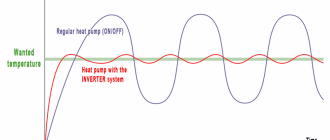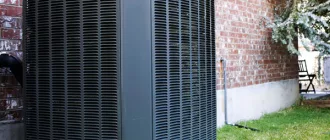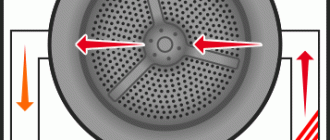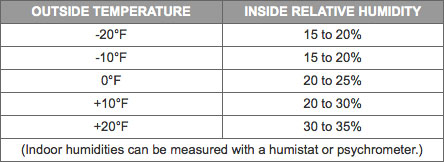
How to Optimize the Humidity in Your Home During Winter
In the cold winter months, maintaining a comfortable indoor environment can be a challenge. The combination of low temperatures and the use of heaters can often lead to dryness and discomfort. One key factor that plays a crucial role in our overall well-being during the winter is the level of humidity in our homes.
Humidity refers to the amount of moisture present in the air. When the air is too dry, it can cause a range of issues, from dry skin and lips to respiratory problems and static electricity. On the other hand, excessive humidity can promote the growth of mold and mildew, leading to health issues and damage to our homes.
To optimize home humidity levels during winter, there are several tips and tricks you can follow. Firstly, it’s important to monitor the humidity using a hygrometer. This device will provide you with accurate readings and help you determine whether you need to increase or decrease the moisture in the air. Additionally, using a humidifier can help add moisture to the air, providing a more comfortable and healthier environment.
Another key aspect to consider is proper ventilation. Opening windows or using exhaust fans can help remove excess humidity and prevent moisture buildup. It’s also essential to ensure that your home is properly insulated to minimize heat loss and reduce the need for excessive heating, as this can contribute to dryness.
The Importance of Winter Home Humidity
The winter season can be a challenging time for maintaining the optimal humidity levels in your home. However, it is essential to focus on optimizing home humidity to avoid the negative effects of dryness on your comfort and health.
When you rely on a heater to keep your home warm during the cold winter months, the air tends to become dry due to the lack of moisture. This can lead to various issues such as dry skin, irritated eyes, and respiratory problems. Moreover, dry air can also cause damage to wooden furniture and floors.
To create a more comfortable and healthier living environment, it is crucial to find ways to balance the humidity levels in your home. One effective method is to use a humidifier to add moisture to the air. This can help alleviate the symptoms associated with dryness and create a more pleasant atmosphere inside your home.
In addition to using a humidifier, proper ventilation is also important for controlling the humidity levels. Opening windows periodically, especially after cooking or bathing, can help remove excess moisture from the air. It is also recommended to use exhaust fans in areas prone to high moisture, such as the kitchen and bathroom.
Monitoring the moisture levels in your home is essential for assessing the effectiveness of your efforts to optimize humidity. Using a hygrometer can help you determine if the humidity is within the recommended range of 30% to 50%. Adjusting the settings on your humidifier or ventilation system accordingly can help maintain a comfortable humidity level.
| 1. Improved overall comfort |
| 2. Reduced dryness-related health issues |
| 3. Protection for wooden furniture and floors |
| 4. Prevention of static electricity |
| 5. Enhanced indoor air quality |
In conclusion, optimizing home humidity during the winter season is crucial for maintaining a comfortable and healthy living environment. By using methods such as humidifiers and proper ventilation, you can alleviate the negative effects of dry air and create a more pleasant atmosphere in your home.
Ideal Winter Home Humidity Levels
During the winter months, many homes suffer from dryness due to low humidity levels. Maintaining the right humidity in your home is important for your comfort and can help optimize the performance of your heating system.
The ideal humidity level for a winter home is around 30-50%. This range provides enough moisture in the air to prevent dryness, while also avoiding excessive humidity that can lead to condensation and mold growth.
To achieve the ideal humidity level in your home, consider using a humidifier. A humidifier can add moisture to the air and help combat the dryness caused by heating systems.
In addition to using a humidifier, proper ventilation is crucial. It’s important to allow fresh air to circulate in your home to avoid excessive humidity. Opening windows for a short period of time each day can help achieve this.
Another factor that can affect home humidity levels is the type of heating system you use. Some heating systems, such as wood-burning stoves, can increase humidity levels in your home. On the other hand, central heating systems tend to reduce humidity levels. Understanding how your heating system affects humidity can help you make adjustments as needed.
By maintaining the ideal humidity levels in your winter home, you can ensure your comfort and prevent issues caused by dryness or excessive moisture. Remember to monitor humidity levels regularly and make adjustments as needed to optimize your home’s environment.
Problems Caused by Low Winter Humidity
During the winter months, low humidity levels can lead to a variety of problems in your home. When the moisture in the air is too low, it can negatively impact the overall comfort of your living space and even your health.
One of the main issues caused by low winter humidity is dryness. Dry air can cause skin to become dry, itchy, and cracked. It can also lead to dry eyes and a dry throat, making it uncomfortable to breathe. Additionally, low humidity can exacerbate respiratory conditions such as allergies, asthma, and sinusitis.
Another problem is that low humidity can affect the wood in your home. The lack of moisture in the air can cause wooden furniture, floors, and even musical instruments to shrink, crack, or warp. This can result in costly repairs or replacements.
Furthermore, low winter humidity can impact the efficiency of your heating system. Dry air feels colder than humid air, so you may find yourself adjusting the thermostat higher to achieve the same level of comfort. This can lead to higher energy bills and strain on your heater.
In order to optimize your home’s comfort during the winter months, it’s important to maintain a balanced level of humidity. This can be achieved through proper ventilation, using a humidifier, and taking steps to reduce moisture loss such as sealing windows and doors.
By addressing the problems caused by low winter humidity, you can create a more comfortable and healthier living environment for you and your family.
Tips for Increasing Home Humidity in Winter
Winter can bring dryness and discomfort to your home due to low levels of moisture in the air. Optimizing home humidity during the winter months is essential to ensure a comfortable living environment. Here are some tips to help increase the humidity in your home:
1. Use a humidifier: Invest in a humidifier to add moisture to the air. Place it in the rooms you spend the most time in, such as the living room or bedroom.
2. Keep the bathroom door closed: Letting the steam from your shower or bath escape into the rest of the house can help increase humidity levels.
3. Utilize houseplants: Plants release moisture through a process called transpiration, so having houseplants can help increase humidity naturally. Grouping several plants together can have a greater impact.
4. Set up drying racks: Instead of using a dryer, air-dry your clothes on drying racks. As the clothes dry, the moisture will evaporate into the air, increasing the humidity in your home.
5. Cover pots and pans while cooking: When you cook, cover pots and pans to retain the steam and prevent it from escaping into the air, increasing humidity levels in your kitchen.
6. Use a kettle or pot of water on the heater: Place a kettle or pot of water on top of or near a radiator or heating vent. The heat will cause the water to evaporate, adding moisture to the air.
7. Allow for proper ventilation: Open your windows for a short period of time every day to allow for fresh air to circulate in your home. This can help prevent excessive condensation and mold growth while still allowing for proper moisture levels.
By following these tips, you can increase the humidity in your home during the winter months and create a more comfortable living environment for you and your family.
Use Humidifiers to Add Moisture
During the winter months, the air in your home can become excessively dry due to the use of heaters and poor ventilation. This can lead to discomfort, dryness of the skin and respiratory problems. To optimize the humidity levels in your home during winter, it is recommended to use humidifiers.
Humidifiers are devices that release moisture into the air, increasing the humidity levels. They come in different types, including cool mist humidifiers, warm mist humidifiers, and ultrasonic humidifiers. Each type has its own benefits and features, so you can choose the one that best suits your needs.
Using a humidifier in your home during the winter can help alleviate the effects of dry air. The added moisture can improve comfort levels by reducing dryness in the skin, eyes, and throat. It can also help prevent the cracking of wooden furniture and other materials that are susceptible to dryness.
When using a humidifier, it is important to keep an eye on the humidity levels in your home. An ideal range is between 30-50% humidity. You can use a hygrometer to measure the humidity levels and adjust the settings on your humidifier accordingly. It is important not to set the humidity too high, as excessive moisture in the air can promote the growth of mold and mildew.
Regular maintenance of your humidifier is also necessary to ensure its optimal performance. This includes cleaning the unit as recommended by the manufacturer and replacing the water regularly. Using distilled water instead of tap water can also help prevent the buildup of mineral deposits in the humidifier.
In conclusion, using humidifiers during the winter months can help add moisture to the dry air in your home, improving comfort levels and preventing the negative effects of dryness. By monitoring the humidity levels and properly maintaining your humidifier, you can optimize the moisture levels in your home and create a more comfortable living environment during the winter season.
Place Water Sources Around Your Home
When it comes to optimizing comfort and humidity levels during winter, one effective tip is to place water sources strategically around your home. This can help to add moisture to the air and counteract the dryness caused by indoor heating systems.
Proper ventilation is essential for maintaining a comfortable and healthy environment in your home. However, during winter, keeping windows open for extended periods of time may not be practical due to the cold weather. By placing water sources such as bowls or small basins in different rooms, you can naturally introduce moisture into the air.
The heat generated by heaters can easily cause the air in your home to become dry and lack moisture. By strategically placing water sources near your heater, the expelled warm air can pick up moisture as it passes over the water, increasing the humidity levels in the room.
Remember to monitor the water levels in these sources and refill them as needed, especially during the winter months when humidity tends to be lower. Additionally, consider using humidifiers or vaporizers to regulate humidity levels more effectively.
By placing water sources around your home, you can help optimize the humidity levels, promoting a more comfortable and healthy indoor environment during the winter months.
Choose Houseplants That Increase Humidity
If you want to optimize the comfort of your home during the dry winter months, consider using houseplants that increase humidity. With the heater running constantly, the air in your home can become dry, leading to discomfort and issues with dryness. Houseplants are a natural and aesthetically pleasing way to introduce moisture into the air, helping to create a more comfortable living environment.
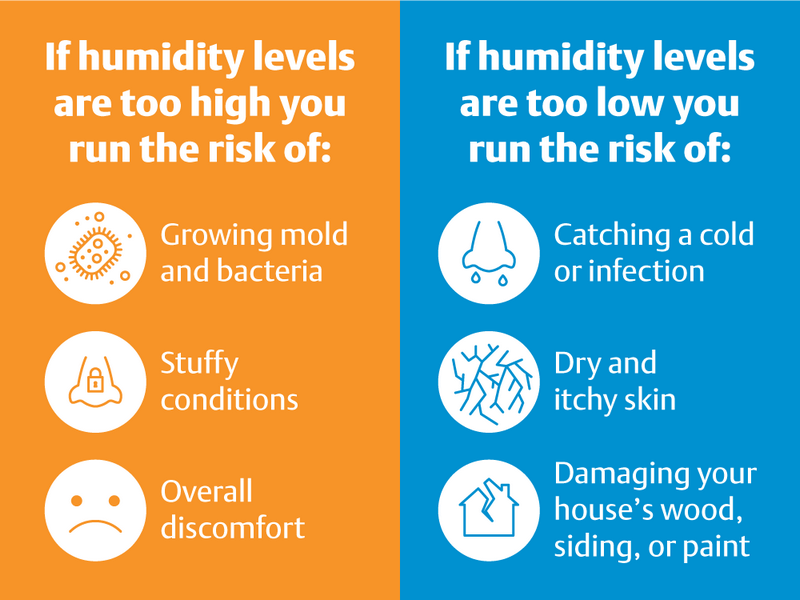
When selecting houseplants, it’s important to choose varieties that are known for their ability to increase humidity. Look for plants that have a high transpiration rate, which means they release moisture through their leaves. Some great options include peace lilies, ferns, spider plants, and Boston ferns. These plants not only beautify your home but also work actively to increase the humidity levels.
It’s also worth considering the placement of your houseplants. Putting them in rooms where you spend a significant amount of time, such as the living room or bedroom, can help to maximize the benefits. Placing multiple plants together can create a microclimate of increased humidity, further enhancing the moisture levels in the air.
Remember to care for your houseplants properly to ensure they thrive and continue to increase humidity. Water them regularly and provide the necessary sunlight and nutrients for optimal growth. Keep an eye on the moisture levels in the air to gauge the effectiveness of your plants in increasing humidity. You can also use a hygrometer to measure the humidity levels in different areas of your home.
Incorporating houseplants that increase humidity into your home is an effective and natural way to combat the dryness often experienced during the winter months. These plants not only add beauty to your living space but also contribute to a more comfortable and moisture-balanced environment.
Open Curtains and Blinds During the Day
An effective way to optimize the moisture levels in your home during winter is to open the curtains and blinds during the day. This simple action allows natural light to enter your home, which can help prevent dryness and increase comfort.
When the sun shines through the windows, it not only provides warmth but can also help to evaporate any excess moisture in the air. This natural process can help maintain a balanced humidity level in your home.
In addition to allowing sunlight into your home, opening the curtains and blinds during the day also promotes ventilation. By letting fresh air circulate, any stagnant air that may contribute to an overly dry environment can be replaced. This can further help in optimizing the humidity levels inside.
Remember to close the curtains and blinds during the evening to insulate your home and retain the warmth that is generated during the day. This can help promote a cozy and comfortable environment while preventing heat loss.
By incorporating the habit of opening your curtains and blinds during the day, you can take a simple step towards optimizing the humidity in your home during the winter season.
Limit the Use of Exhaust Fans
Proper ventilation is important for maintaining a healthy indoor environment, especially during winter when humidity levels tend to be low. However, excessive use of exhaust fans can lead to decreased moisture levels in your home, resulting in dryness and discomfort.
While exhaust fans are essential for removing odors, moisture, and pollutants, it is important to optimize their use during winter months. Instead of running them continuously, consider using them only when necessary, such as after cooking or showering.
Excessively using exhaust fans can lead to the expulsion of warm air from your home, which can cause your heater to work harder and increase energy consumption. By limiting their use, you can retain more heat and maintain a comfortable indoor temperature.
Moreover, reducing the use of exhaust fans helps to prevent excessive moisture removal. This is particularly important during winter when the air is already dry, as excessive dryness can lead to issues such as dry skin, dry eyes, and respiratory problems.
However, it is important to strike a balance. While limited use of exhaust fans can help maintain optimal humidity levels, it is also crucial to keep an eye on moisture levels in your home. If you notice condensation on windows or signs of dampness, it may be necessary to use exhaust fans more frequently to remove excess moisture.
By finding the right balance and limiting the use of exhaust fans, you can optimize the humidity levels in your home during winter. This will help to ensure your comfort and well-being while preventing issues related to excessive dryness or moisture.
Use a Water-Gel Evaporator
One effective way to optimize the humidity levels in your home during the dryness of winter is by using a water-gel evaporator. This device helps to add moisture to the air and improve the overall comfort of your living space.
A water-gel evaporator works by utilizing the principles of evaporation. The device consists of a container filled with a water-based gel material that slowly releases moisture into the air through evaporation. As the water molecules evaporate, they increase the humidity levels in the surrounding environment.
Using a water-gel evaporator can be a cost-effective and energy-efficient solution for maintaining the ideal humidity in your home during winter. Unlike a traditional humidifier that requires a heater to produce steam, a water-gel evaporator relies on natural evaporation, requiring minimal energy consumption.
This type of device can be particularly beneficial if you have a well-insulated home with limited ventilation. Insulation can trap moisture, leading to dry air and discomfort. By using a water-gel evaporator, you can introduce the right amount of moisture into your living space without the need for excessive ventilation.
To use a water-gel evaporator effectively, simply place the device in a central location in your home, such as the living room or bedroom. The evaporator will gradually release moisture into the air, helping to combat dryness and increase humidity levels.
By incorporating a water-gel evaporator into your winter home humidity optimization strategy, you can ensure a comfortable living environment with optimal humidity levels. The device helps to balance the moisture in the air, preventing issues such as dry skin, irritated sinuses, and static electricity, while enhancing overall comfort and well-being.
| Cost-effective and energy-efficient solution |
| Requires minimal energy consumption |
| Ideal for well-insulated homes with limited ventilation |
| Helps combat dryness and increase humidity levels |
| Prevents issues such as dry skin, irritated sinuses, and static electricity |
Adjust Your Heating System to Increase Humidity
Dryness is a common problem during the winter months, as the cold weather combined with indoor heating systems can significantly decrease the moisture levels in your home. To optimize the humidity levels, it is important to make adjustments to your heating system.
One of the simplest ways to increase humidity indoors is to use a humidifier. There are different types of humidifiers available, including standalone units that can be placed in individual rooms or whole-house humidifiers that can be integrated into your home’s heating system.
Another way to increase humidity is to adjust the settings on your heater. Lowering the temperature on your thermostat can help reduce the drying effect of the heating system. You can also use a programmable thermostat to automatically adjust the temperature and humidity levels throughout the day.
In addition to adjusting your heating system, proper ventilation is also important. Opening windows for a few minutes each day can help bring in fresh air and increase humidity levels. However, be mindful of the outside temperature and air quality before opening windows.
It is crucial to monitor the humidity levels in your home to ensure optimal moisture levels. A hygrometer can be used to measure and monitor the humidity levels. The ideal humidity level for a comfortable and healthy indoor environment during the winter months is between 30% and 50%. Adjusting your heating system and taking necessary steps to increase humidity can help create a more comfortable living space during the winter season.
Monitor and Maintain Humidity Levels
During the winter months, it is important to closely monitor and maintain humidity levels in your home. The use of a heater can result in lower humidity levels, which can lead to discomfort and dryness.
Moisture levels in the air have a direct impact on our overall comfort and well-being. Low humidity can cause dry skin, eyes, and throat, as well as increase the likelihood of static shocks. On the other hand, high humidity can lead to a damp and musty environment, which can promote the growth of mold and mildew.
To ensure a healthy and comfortable indoor environment, it is recommended to maintain an indoor humidity level between 30% and 50% during the winter months.
To monitor humidity levels in your home, you can use a hygrometer, a device specifically designed to measure humidity. Hygrometers are available in various types, including analog and digital options. Place a hygrometer in different rooms of your home to get an accurate reading of the humidity levels.
If the humidity levels in your home are too low, there are several steps you can take to increase moisture. One simple solution is to place bowls of water near the heating sources to increase the humidity in the surrounding air. You can also use a humidifier to add moisture to the air. Proper ventilation is also important in regulating humidity levels. Open windows periodically to allow fresh air to circulate throughout the house and reduce excess moisture.
On the other hand, if the humidity levels in your home are too high, you can use dehumidifiers to remove excess moisture from the air. Additionally, proper ventilation, such as using exhaust fans in bathrooms and kitchens, can help reduce humidity levels.
Regularly monitoring and maintaining humidity levels in your home during the winter season can help create a more comfortable and healthy living environment.
Benefits of Optimized Winter Home Humidity
Optimizing the humidity levels in your home during the winter season can provide numerous benefits for both your health and overall comfort. Here are some of the advantages of maintaining the ideal humidity level:
- Improving Indoor Air Quality: Dry air can lead to respiratory issues and dry out your nasal passages. By optimizing your home humidity, you can reduce the risk of respiratory problems and improve indoor air quality.
- Enhancing Comfort: Dry air can cause discomfort, leading to dry skin, eyes, and throat. By maintaining proper humidity, you can improve your overall comfort level and avoid the discomfort associated with dryness.
- Protecting Furniture and Wooden Structures: Low humidity levels can cause wood to contract and crack, leading to damage to your furniture and wooden structures. Optimizing humidity can help prevent this by ensuring the moisture content of the wood remains stable.
- Preventing Static Electricity: Dry air can increase the buildup of static electricity, which can cause static shocks. By optimizing humidity levels, you can reduce the occurrence of static electricity and minimize those annoying shocks.
- Promoting Energy Efficiency: Keeping your home at the optimal humidity level can help improve the efficiency of your heating system. Dry air feels colder than humid air, so by maintaining proper humidity levels, you can feel warmer at lower temperatures, allowing you to lower your heater usage and save on energy costs.
- Boosting Overall Health: Maintaining the right humidity level in your home can help alleviate dry skin, dry eyes, and reduce the risk of respiratory infections, allergies, and asthma. By optimizing humidity, you can contribute to better overall health for you and your family.
- Enhancing Ventilation Effectiveness: Proper humidity levels can also improve the effectiveness of your home ventilation system. Balanced humidity levels can help remove odors and ensure better air circulation throughout your living spaces.
By optimizing the humidity in your home during the winter, you can enjoy better air quality, improved comfort, and protect both your health and your property. Implementing strategies to maintain the ideal humidity can help create a healthier and more comfortable living environment.
Q&A:
Why is it important to optimize home humidity during winter?
Optimizing home humidity during winter is important for several reasons. Firstly, low humidity levels can cause dry skin, irritated eyes, and respiratory problems. By maintaining optimal humidity levels, you can prevent these health issues. Secondly, proper humidity levels can help to protect your wooden furniture and flooring from drying out and cracking. Finally, optimizing home humidity can also help to create a more comfortable and cozy environment during the winter months.
What is the recommended humidity level for homes during winter?
The recommended humidity level for homes during winter is between 30% and 50%. This range helps to balance the need for moisture in the air without creating excess humidity that can lead to condensation and mold growth. It’s important to monitor the humidity level in your home with a hygrometer and make adjustments as needed to maintain the optimal range.
How can I increase humidity in my home during winter?
There are several ways to increase humidity in your home during winter. One method is to use a humidifier. This device releases moisture into the air and can be set to maintain a specific humidity level. Another option is to place water-filled containers near heat sources, such as radiators or vents. As the water evaporates, it adds moisture to the air. Additionally, you can hang wet towels or clothes indoors to increase humidity. Finally, sealing air leaks and maintaining proper insulation can help to retain moisture in your home.
How can I decrease humidity in my home during winter?
If your home has excess humidity during winter, there are a few steps you can take to decrease it. Firstly, make sure that your exhaust fans are properly functioning in areas like the kitchen and bathroom. These fans help to remove excess moisture from the air. You can also use a dehumidifier to remove moisture from the air in specific rooms or areas of your home. Another option is to open windows and doors on dry days to allow fresh air to circulate and reduce humidity. Lastly, repairing any leaks or water damage in your home can help to prevent excess moisture from seeping in.



